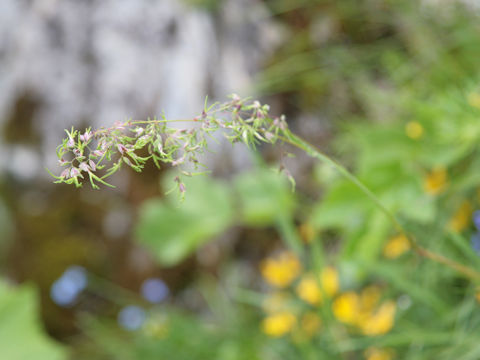
|
The Bulbous bluegrass (Poa bulbosa) belongs to Poaceae (the Grass family). It is a pernnial herb that is native to Europe, Asia, and North Africa, it is now naturalized throughout the world as an invasive species and has become a noxious weed in some areas. It grows in pastures, fields, grasslands, and along roadsides, and grows to a height of about 60 cm. The stem is smooth and hollow, and usually has an "onion"-like sheathing stalk about 1 cm long at the base. The leaves are gray-green, linear, and 1-2.5 mm wide. In summer, the plant produces a panicle at the top of the stem, which bears small flowers and bulbils. It produces few viable seeds and usually reproduces asexually through the bulbose stractures at the base of the stem and the bulbils on the inflorescence. Mammals and birds feed on the starchy bulbs to aid dispersal. In Chinese, it is called "鱗茎早熟禾" (lin jing zao shu he).
|

